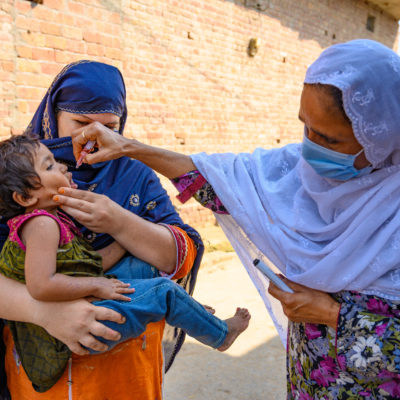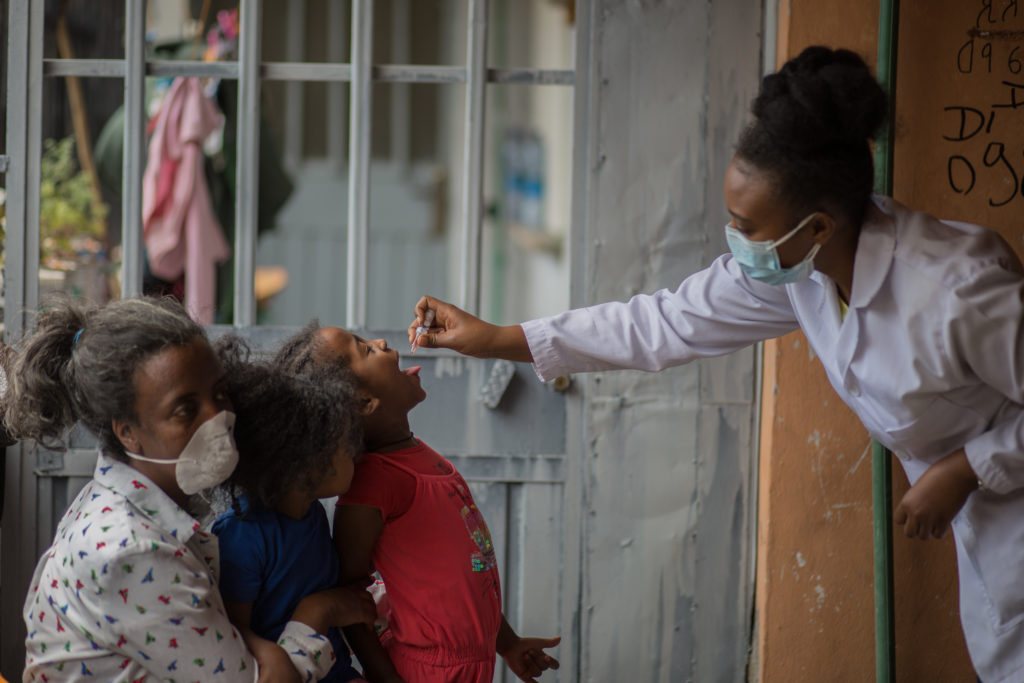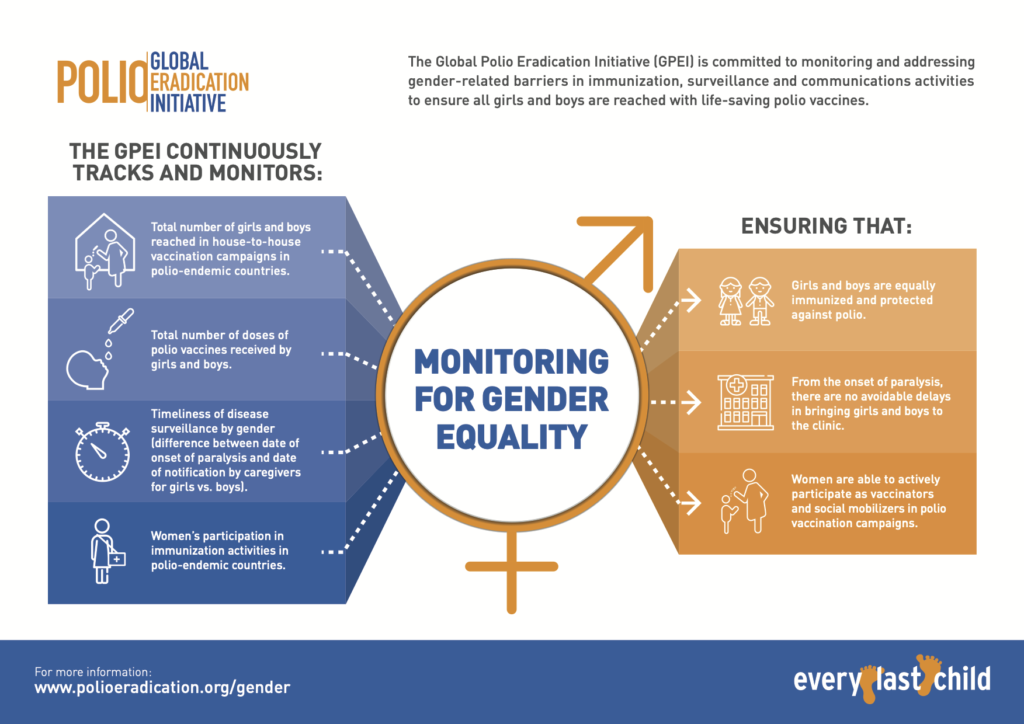Hope for Polio Eradication: Using a Gender Lens
Polio is on the edge of being eradicated globally with just two countries left who suffer from polio cases.

In order to completely eradicate polio, every child in every household must be vaccinated. Yet thousands of children worldwide are still missing out on the polio vaccine. As long as the disease remains circulating, there is always a potential threat that it could spread across borders to other unimmunized communities, causing local and widespread outbreaks.
If successful, polio would be only the second infectious disease in history to be eradicated after smallpox. As the global health community rallies together to reach the final stage of polio eradication, immunization teams are adopting a gender lens approach to tackle polio.
 © UNICEF/Tadesse
© UNICEF/Tadesse
Women have emerged as leaders on the frontlines of the polio response. In Pakistan, women make up more than 56% of frontline workers, and in Nigeria, over 90%. These women possess the necessary cultural competency to best support the unique needs of their communities. They can address conflicts and challenges that would otherwise not be as easily understood by workers outside their cultural parameters.
Gender Barriers to Immunization
Gender-related barriers persist on multiple levels, disrupting access to essential health and immunization services. In some communities, gender norms prohibit men from entering households to interact with mothers and deliver polio vaccines to their children. Therefore, those children risk going unvaccinated if a male immunization worker visits.
Gender inequalities have also restricted some women’s decision-making power with their children’s health. These women may not have permission or the necessary resources to take their children to immunization clinics. Many women lack access to money, transportation, or time in order to get their children the health services they need.
In many countries, literacy rates are lower among women than men, which can impact a mother’s ability to digest valuable health information. Studies show that women who receive less education are less likely to immunize their children. This can be explained by socioeconomic factors, since more educated mothers tend to live in affluent areas with access to better health services.
“In the polio context, much of the work now hinges on gender because mothers are so often the primary caregivers for their children and because access to immunization is often gender-linked.”
— Lana Zaki Nusseibeh, ambassador, United Arab Emirates Permanent Mission to the United Nations
In some countries, there are apparent disparities between boys and girls immunization rates. In communities where boys are more valued, their health needs are prioritized over girls. They receive better access to food and health services, including vaccination.
The COVID-19 pandemic has further demonstrated the inequities in gender and disease. During the pandemic, women are almost twice as likely to lose their jobs and sexual and gender-based violence has also dramatically increased. While COVID-19 threatens to reverse the progress for women worldwide, a gender lens may be key to overcoming barriers.
Removing Barriers
Female health workers play an integral role in building trust in their communities. As 70% of the global health and social workforce, women serve as trusted pillars within their communities. They educate mothers and caregivers about the value of vaccines and help provide resources to encourage childhood immunizations.
“We all must commit to working toward a world where women and children are free from discrimination, and the GPEI’s Gender Equality Strategy is a concrete step to reach gender equality and women’s empowerment.”
– Senator Hon Marise Payne, Australian Minister for Foreign Affairs and Minister for Women
Our partners at Global Polio Eradication Initiative (GPEI) have adopted a gender strategy and commitment to advancing gender equality in its effort to eradicate polio. As part of its strategy, GPEI uses surveillance and communications activities to ensure all girls and boys receive life-saving polio vaccines. Most importantly, it monitors interventions through a gender lens, and it conducts outline gender analysis to identify and address gender-related barriers in its immunization and disease surveillance activities. By tracking the differences between the number of boys and girls being immunized, immunization programs can better assess how to act on any discrepancies.
Gender is one of the most powerful determinants of health. Just like age, ethnicity, or economic status, gender affects our access to services, including our access to immunizations. As such, it is essential to not only identify, but also address gender-related barriers in immunization. Incorporating a gender lens is our best hope to protect all boys and girls from vaccine-preventable diseases. At Shot@Life, we’re committed to make sure every child everywhere is reached with life-saving vaccines.

